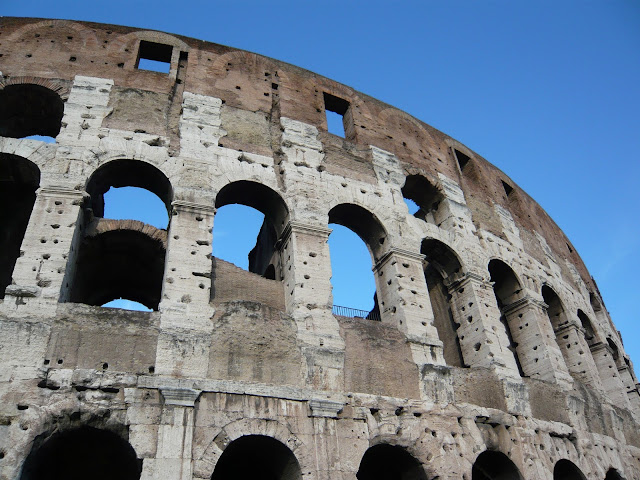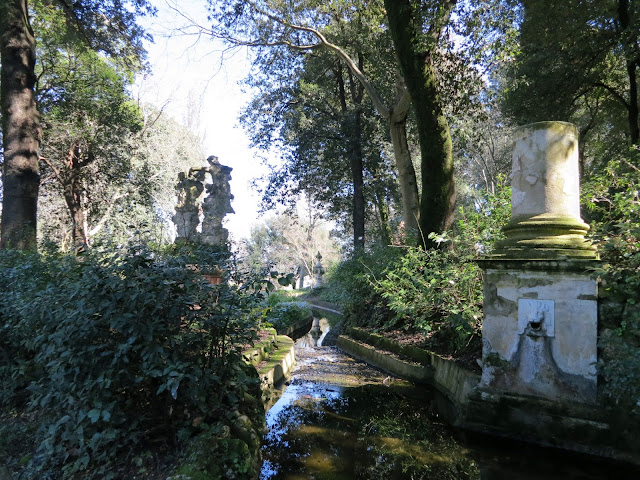 |
| Photograph Copyright ©2013 Loo Yen Yeo. All Rights Reserved. |
Concepts: Frame shape (an uninsistent frame)
Description: A bright clear day on
Piazzale Michelangelo overlooking Florence. The scene abounds with colours, textures, and points of interest - there is plenty of potential for re-composition through cropping.
Title: Florence uncut
 |
| Photograph Copyright ©2013 Loo Yen Yeo. All Rights Reserved. |
Concepts: Cropping; Horizon (emphasising sky)
Description: A strong crop from both top and bottom frame edges with more space given over to the sky, the original width is retained. The eye sees the arrow-like high cloud formation right-of-centre which directs it down to the hill onto the spires of Florence. The thin ratio of ground to sky is intentionally unbalanced, concentrating the eye strongly on the
Basilica di Santa Maria del Fiore. Despite the higher proportion of sky, the most visual tension centres around the
Duomo.
Title: Heaven on Earth
 |
| Photograph Copyright ©2013 Loo Yen Yeo. All Rights Reserved. |
Concepts: Cropping; Horizon (foreground interest)
Description: A crop from both top and bottom frame edges with space given over to the foreground, the original width is retained.
Palazzo Serristori, the reddish-brown mansion in the centre, is the visual fulcrum of the image - an apex of at least three triangles with Brunelleschi's dome and
Torre d'Arnolfo; Brunelleschi's dome and the viewing platform; and with the topiary hedge.
Title: Seeing Florence
 |
| Photograph Copyright ©2013 Loo Yen Yeo. All Rights Reserved. |
Concepts: Cropping; Horizon (similar proportions)
Description: A crop from both top and bottom frame edges with emphasis upon the middle distance, the original width is unchanged. This time
Torre d'Arnolfo is the first draw, followed by
Palazzo Serristori, and then Brunelleschi's dome creating a single triangle.
Ponte Vecchio assumes more prominence, setting up a line through the tower and dome, and a lesser triangle with the tower and the
palazzo. This is a simpler, more coherent composition to that with foreground dominant.
Title: Three Icons
 |
| Photograph Copyright ©2013 Loo Yen Yeo. All Rights Reserved. |
Concepts: Cropping; Frame shape (shooting vertically)
Description: An all-around crop to vertical format is possible. In this case the message is the human activity of the foreground against a historic city backdrop. The fore and mid-ground textures would be too dense if they weren't balanced by suitable expanse of sky.
Title: --
 |
| Photograph Copyright ©2013 Loo Yen Yeo. All Rights Reserved. |
Concepts: Cropping; Frame shape (the square frame)
Description: An all-around crop to the challenging square format. Composing in a square frame can be awkward, and cropping helps us achieve it post-capture. Although the perspective best shows off the direction of light on the bell tower of
Chiesa di San Niccolò in the lower right, and then the curve of the Arno sweeping up to the three bridges, there's a touch too much sky for perfect balance - but that lends a restless energy to this composition.
Title: --





























